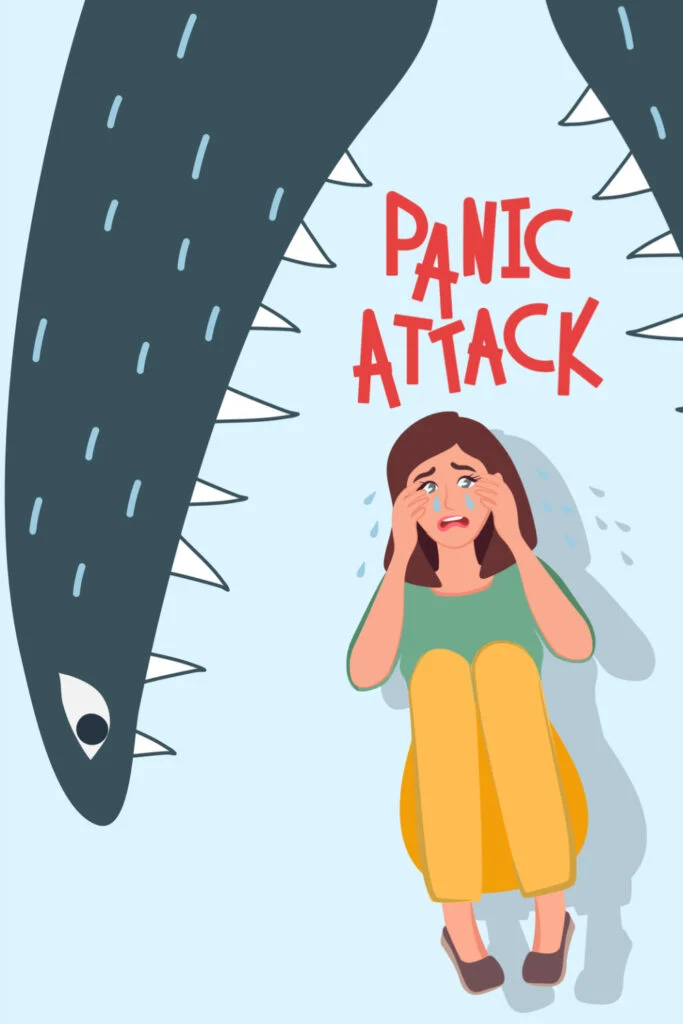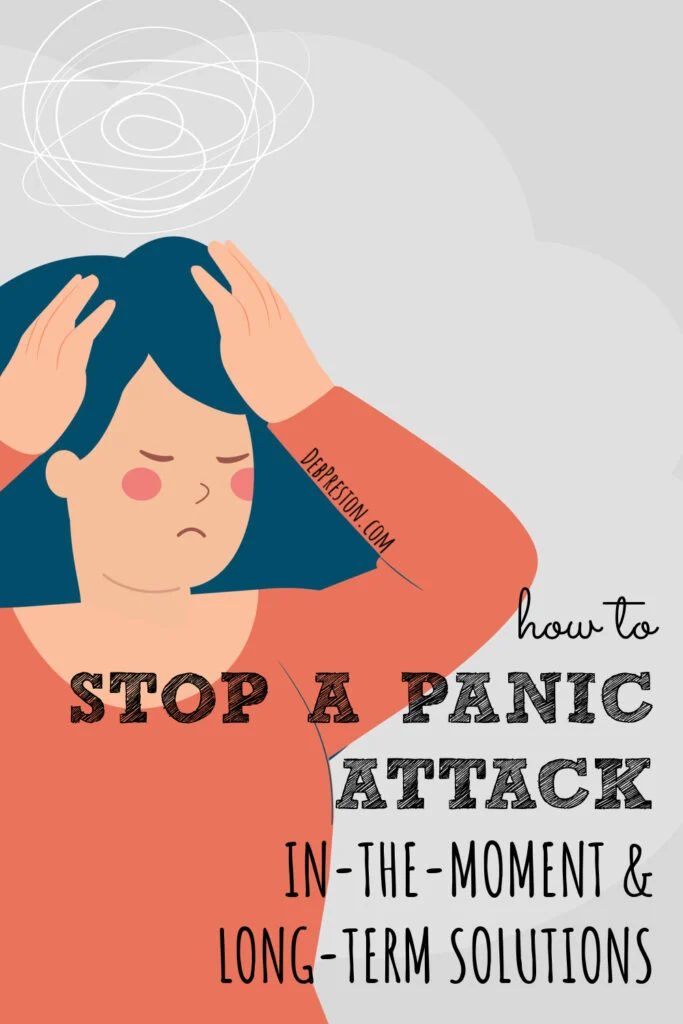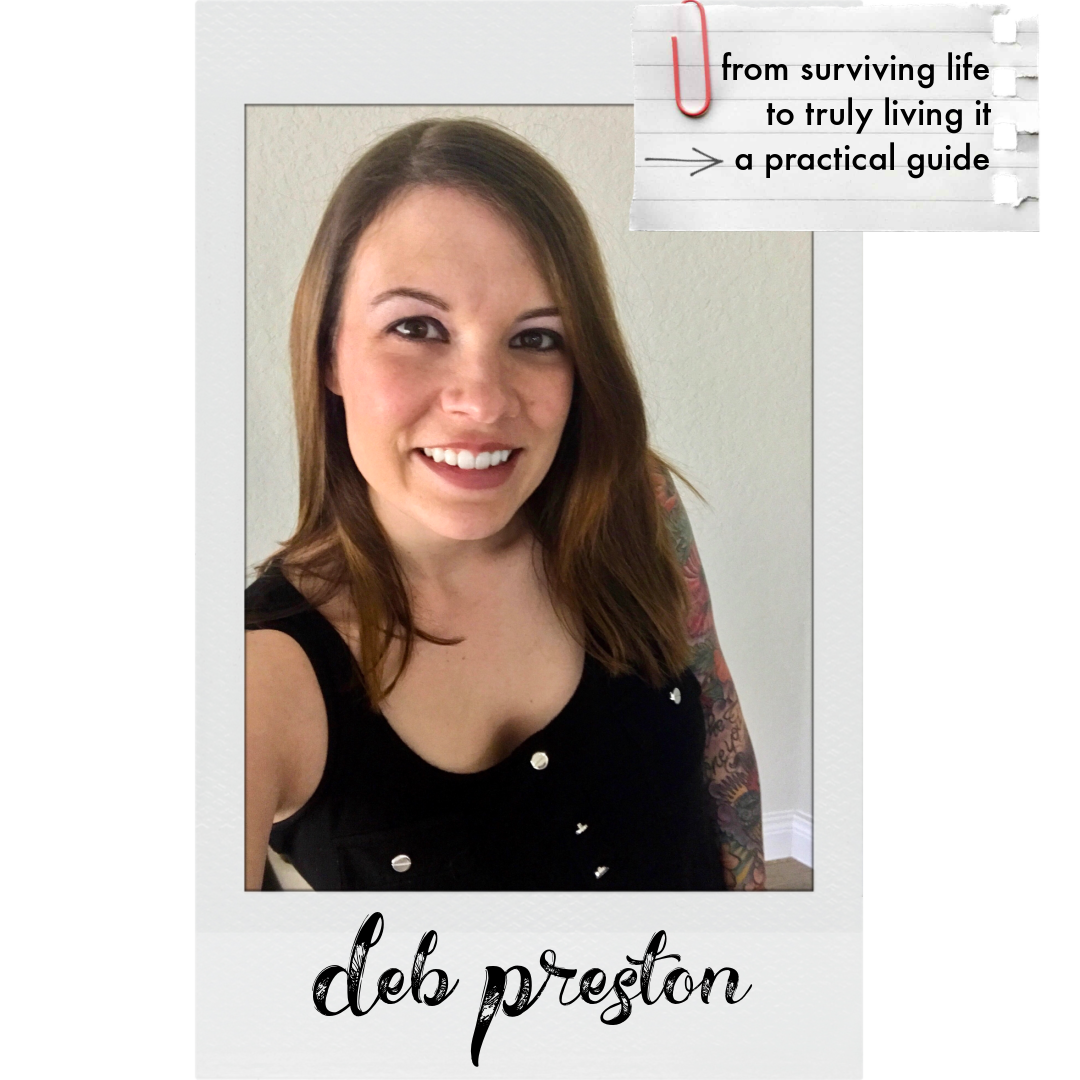I’ll always remember my friend’s first panic attack twenty years ago.
We were in class and suddenly, his face went numb. As his breath quickened, he grabbed his chest in pain. We rushed to the ER so that doctors could determine if he was having a heart attack or a stroke.
Neither, they said. It was a panic attack. And chances were good it would happen again.
…what?
Because I’m old, I ran back to my 4-inch-thick laptop in my dorm room, hurried to AskJeeves.com, and asked Jeeves how to stop a panic attack.
While it was the first time I had learned about panic attacks, it was only the beginning of anxiety’s slow and steady spread across the globe. Today, up to 11% of those living in the United States experience a panic attack each year, with 2-3% of them having a panic disorder.
It’s spreading, making it all the more important to learn how to stop a panic attack. And the first step of all is to understand what they are.

Learn How to Stop a Panic Attack By Understanding Panic Attacks
Panic attacks are sudden episodes of intense fear and anxiety that can feel extremely distressing. They often occur unexpectedly and can peak in intensity within minutes, making you feel completely overwhelmed.
The first step in learning how to stop a panic attack is to understand the symptoms and sensations associated with it. As you likely know, panic attacks can bring about both physical and emotional symptoms.
You might feel an overwhelming sense of dread, fear of dying, or sensations of going crazy or imminent doom.
These distressing emotions may be accompanied by physical symptoms such as a racing heart, chest pain, sweating, shaking, nausea, trembling, and chills. These can feel so intense that you might believe you’re having a heart attack or another serious medical emergency.
Other physical sensations during a panic attack might include lightheadedness, hot flashes, palpitations, tingling in your extremities, and shortness of breath.
You may experience dizziness, derealization, depersonalization, or a sense of detachment from your surroundings. Additionally, muscle tension is a common physical symptom that can contribute to feelings of anxiety and unease.
In some cases, panic attacks can be just one piece of an anxiety disorder, which is a group of mental health conditions characterized by excessive worry or fear. These anxiety disorders may cause the onset of panic attacks or make them more frequent.
Recognizing the signs of a panic attack and understanding the connection between anxiety and panic are essential steps in learning how to stop a panic attack.
Learn How to Stop a Panic Attack By Recognizing Triggers
Recognizing the triggers of your panic attacks is an important step in managing and preventing them. Let’s explore some common triggers and how to recognize them.
Stress
Stress is a common trigger for panic attacks. Situations that cause stress, such as work pressure, relationship problems, or financial issues, may contribute to the onset of a panic attack.
In order to manage stress as a trigger, pay attention to how your body reacts in high-stress situations. Some warning signs of stress-related panic attacks include:
- Increased heart rate
- Shallow or rapid breathing
- Muscle tension
- Restlessness
Take note of these sensations and try to identify the sources of stress in your life. Developing stress management techniques, such as deep breathing exercises, mindfulness, or physical activity, can help you cope with stress and lessen the likelihood of experiencing a panic attack.
Substance Use
The use of certain substances can also act as a trigger for panic attacks. Some common substances that could cause panic attacks include:
- Caffeine: Consuming excessive amounts of caffeine can lead to increased anxiety and panic attacks. If you notice that your panic attacks occur after consuming caffeinated beverages, consider limiting your intake or exploring caffeine-free alternatives.
- Alcohol: Despite its reputation as a relaxant, alcohol can actually increase anxiety and trigger panic attacks, especially during withdrawal or after heavy consumption. Monitoring your alcohol intake and being mindful of its effect on your mental state may help you avoid panic attacks associated with alcohol.
Recognizing the triggers of your panic attacks is essential in learning how to manage and prevent them. By identifying stressors and monitoring substance use, you can take control of your mental health and work toward a state of well-being.
Remember, recognizing triggers is only the first step to learning how to stop a panic attack. It’s also important to seek professional help if you’re struggling to manage panic attacks on your own.

Managing Panic Attacks
Breathing Techniques
During a panic attack, one helpful strategy is to focus on your breathing. Take slow, deep breaths to help you relax and regain control.
One popular and effective method is the 4-7-8 breathing technique, where you inhale for 4 counts, hold your breath for 7 counts, and exhale for 8 counts. Repeat this process until you feel more balanced and calm.
Physical Activities
While engaging in regular exercise can help to manage stress, physical activity can also be used to distract yourself from a panic attack and release built-up tension in the moment. Try going for a brisk walk, participating in a gentle yoga session, or practicing progressive muscle relaxation to help soothe your body and mind.
Mindfulness and Distraction
Another effective way to manage panic attacks is through mindfulness and distraction techniques. Here are a few suggestions:
- Stay present: Focus on the present moment and remind yourself that the panic attack will pass. Practicing mindfulness involves paying attention to your body and mind without judgment or fear.
- Mantra: Recite a positive mantra or affirmation to help shift your focus away from negative thoughts. Choose one that resonates with you and repeat it quietly or in your mind.
- Grounding techniques: The 5-4-3-2-1 method is a widely-used grounding technique that can help you regain control during an attack. Identify 5 things you can see, 4 you can touch, 3 you can hear, 2 you can smell, and 1 you can taste. Engage in each of these sensory experiences to anchor yourself in the present.
- Visualization: Picture a soothing or calming scene in your mind. This can be a serene beach, a tranquil forest, or a peaceful mountain view. Allow your imagination to transport you to this place, helping you feel more relaxed and at ease.
By incorporating these strategies into your daily routine, you can help stop or avoid panic attacks and develop a more relaxed, mindful response to these challenging moments. Remember to be patient with yourself and seek professional guidance if necessary.
(Looking for a few more anxiety coping skills to add to your toolbox? Check out this post!)

Learn How to Stop a Panic Attack Through Professional Help and Medications
When experiencing anxiety symptoms or panic attacks, it’s essential to seek professional help. A healthcare provider will assess your condition and develop a tailored treatment plan that may include medications, psychotherapy, or a combination of both.
Your healthcare provider might use the DSM-5 criteria to diagnose your condition. Be transparent about your symptoms and experiences so that they can provide an accurate assessment.
Additionally, they may conduct blood tests to rule out any underlying medical issues that could be contributing to your symptoms.
One of the primary forms of psychotherapy for panic attacks is cognitive behavioral therapy (CBT).
CBT helps you identify and change negative thought patterns that trigger your panic attacks. Through this therapeutic approach, you can learn to manage your symptoms and ultimately regain control over your life.
Your healthcare provider might also prescribe selective serotonin reuptake inhibitors (SSRIs) like fluoxetine, sertraline, and paroxetine, or serotonin-norepinephrine reuptake inhibitors (SNRIs) such as venlafaxine. These medications can help regulate the chemicals in your brain, reducing the frequency and severity of your panic attacks.
Another type of medication for panic attacks is benzodiazepines. Examples of benzodiazepines include alprazolam and clonazepam, which are typically used as short-term treatment options due to their potential for dependence and other side effects.
It’s important to discuss with your healthcare provider the potential side effects of medications and their suitability for your specific needs.
Keep in mind that it might take some time to find the right medication and dosage that works best for you. Meanwhile, continue practicing the skills you learn from psychotherapy for better management of your panic disorder.
By taking these steps and working closely with your healthcare providers, you can develop a comprehensive treatment plan to manage your anxiety symptoms and reduce the occurrence of panic attacks. Remember, you’re not alone in this journey, and seeking help is the first step toward a healthier, happier life.
Self-Care Practices
Developing self-care practices is crucial in managing panic attacks. These practices can help ground you during an episode, providing much-needed relief.
Here are a few self-care suggestions to help you navigate these difficult moments.
First, remember to focus on your breathing. Deep breaths can help alleviate the rapid breathing often associated with panic attacks, enabling you to regain control.
Try inhaling for a count of four, holding your breath for a moment, and then exhaling for a count of four. Repeat this process until you feel calmer.
Using aromatherapy can also be beneficial, so consider keeping some lavender oil nearby.
The calming scent of lavender has been shown to reduce anxiety. Simply take a few sniffs of the oil or apply it to your wrists or a tissue, and inhale deeply.
A positive script can prove to be a valuable tool during a panic attack.
Write down encouraging and soothing words for yourself to read in the midst of an episode. This can help to counteract the negative thoughts that may arise and offer reassurance.
Closing your eyes is another useful technique. It can help you to shut out any external distractions and focus on your breathing, your positive script, or the soothing aroma of lavender.
You might also try holding onto an ice cube. The cold sensation can bring you back to the present moment, grounding you through the physical stimulus and redirecting your thoughts.
Lastly, don’t be afraid to explore the spiritual meaning behind your panic attacks.
Some people find solace in embracing the idea that these episodes are a part of their spiritual journey. This perspective may provide comfort and a new approach to self-care.
Feel free to mix and match these self-care practices to find what works best for you. Remember, the key is to remain patient with yourself and continue to practice different techniques that support your well-being.

And there you have it…how to stop a panic attack and decrease their overall frequency. What go-to tricks have you learned to stop panic attacks? Be sure to share in the comments!
Frequently Asked Questions About How to Stop a Panic Attack
How to distract yourself during a panic attack?
Distracting yourself during a panic attack can help alleviate the intense feelings.
One way to do this is by stimulating your senses, such as holding an ice cube or smelling a strong scent like lavender. Another option is to relocate yourself to a different environment, like stepping outside for fresh air.
How to stop panic attacks at night?
To prevent panic attacks at night, create a calming bedtime routine.
Relaxation techniques, such as deep breathing exercises or progressive muscle relaxation, can help your body wind down before sleep. Keep a consistent sleep schedule, and consider addressing any underlying issues, such as poor sleep quality or stress.
For a step-by-step guide to how to stop nocturnal panic attacks, check out this post!
How to get through a panic attack alone?
When you’re alone during a panic attack, remind yourself that it will pass and won’t harm you.
Practicing deep breathing can help calm your body and mind. Create a script filled with positive thoughts and encouraging words to read during the panic attack.
What causes panic attacks?
Panic attacks can be caused by various factors, including genetic predisposition, stress, or major life transitions. However, identifying specific triggers for each individual can be challenging, and sometimes panic attacks may seem to occur without a known cause.
How do you calm a panic attack ASAP?
To calm a panic attack quickly, start by recognizing the symptoms and taking slow, deep breaths. Focus on inhaling for a count of four and exhaling for a count of four.
Remind yourself that the panic attack will pass, and if possible, remove yourself from any stressful environments.
What is the 3 3 3 rule for anxiety attacks?
The 3 3 3 rule is a simple technique to help you refocus during an anxiety attack. It involves identifying three things you see, three things you hear, and three parts of your body that you can feel or move.
This grounding exercise can help to bring your awareness back to your surroundings and reduce your anxiety levels.

P.S. Ready to escape survival mode? Start living life on YOUR terms! The Take Charge Collection of 15 free resources will help you to simplify, organize, and take charge of your life! Get yours free HERE.
Disclosure: While all opinions are our own, we are a participant in the Amazon Services LLC Associates Program and other affiliate advertising programs, designed to provide a means for us to earn fees by linking to Amazon.com and affiliated sites, at no additional cost to you.



